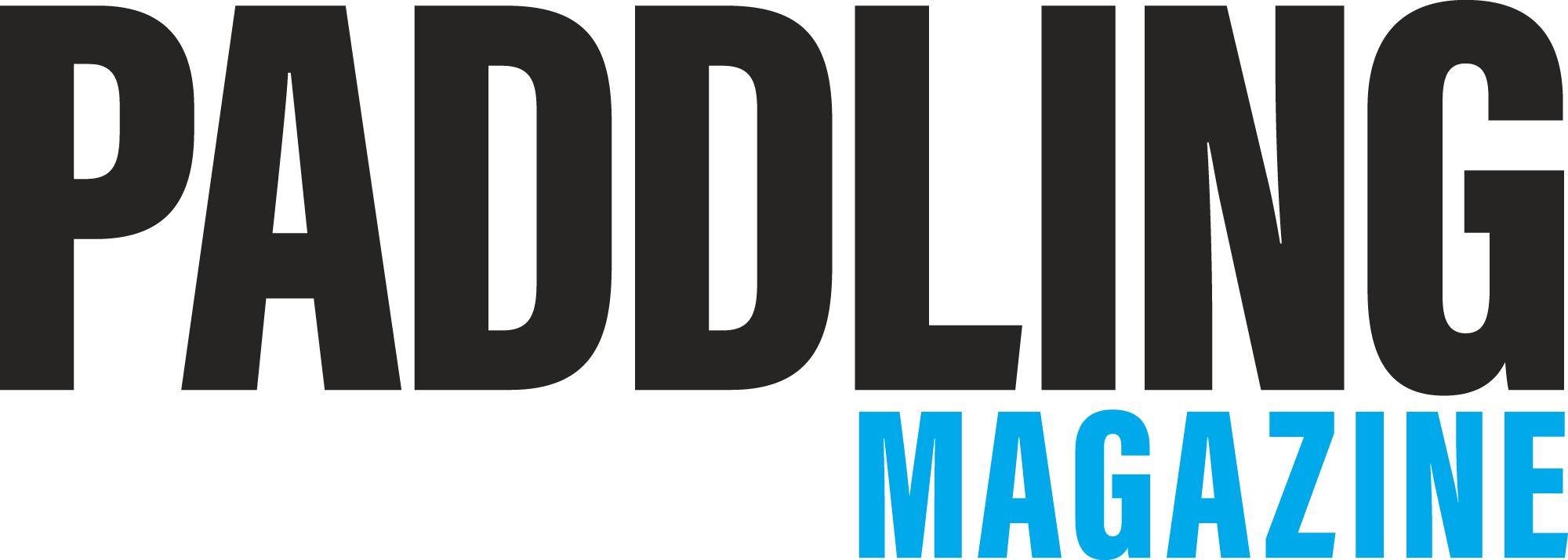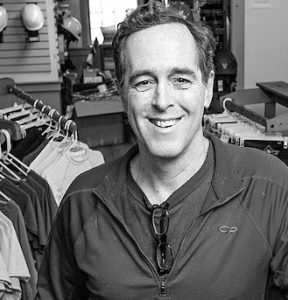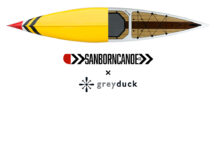We asked retailers and industry leaders for their thoughts on everything from the flood of cheap box-store boats to shipping rates and the future of outdoor sports in the digital age. Here’s what some of you had to say.
About 25 or 30 percent of our sales are from people who bought the cheap entry-level kayaks and now want to upgrade to better quality boats. The majority of our sales are from people who’ve done their research and want a better quality boat from the get-go.
—Sean Creary, River and Trail Outdoor Company, Rothesay, New Brunswick
Specialty has always been the source of a better experience. We are seeing new customers who got into paddling via the economical kayaks finding their way to us and upgrading, often to really nice rec boats.
—Jon Holmes, Bill & Paul’s Sporthaus, Grand Rapids, Michigan
We won’t price match Walmart or Dick’s because we’re a different animal. We’re not here just for the money. We’re here to service our customer and stand behind what we do. The box stores sell a different kind of kayak.
—Bob McIvor, Bob’s Up the Creek Outfitters, Amherst and Moneta, Virginia.
Do you really want your kayak made by a factory making Port-A-Potties?
—Bill Kueper, Wenonah / Current Designs, Winona, Minnesota
Any industry wanting to remain competitive and vibrant needs to embrace diversity. Paddlesports programs reaching non-traditional audiences for outdoor adventure sports will find an exciting new market who appreciates the outreach. Part of this outreach needs to be an effort to put women and minorities in positions of authority within the industry, which will only happen in significant numbers when we broaden the base overall.
—Bruce Lessels, ZOAR Outdoor, Charlemont, Massachusetts and Wilmington, Vermont
The biggest factor affecting paddlesports is the aging out of the core demographic with fewer young people entering the sport. The best antidote is to take a kid paddling.
—Dave Lindo, OKC Kayak, Oklahoma City, Oklahoma
The biggest factor for our business is National Park Service regulations. The NPS regulates the number of canoes, rafts, and kayaks that can be used by concessionaires on the Buffalo River. They don’t regulate private parties, and with the advent of recreational kayaks the numbers of privates versus the number of rentals has soared. We have become a shuttle company.
—Mike Mills, Buffalo Outdoor Center, Ponca, Arkansas
Nobody is talking about restricted access to public waterways throughout North America. Access is a huge hurdle to kayak and canoe use.
—Marc Pelland, Owner, Kayak Distribution and Riot Kayaks
Sales of well-designed and safer kayaks continue to suffer due to the price erosion of the lower-quality ‘yaks sold by big box and sporting goods stores. Safety continues to be a concern, since there are no requirements for flotation and weight capacity. The boating industry has yet to address the fact that paddlers can drown.
—Joe Rozsahegyi, Kokomo Canoe and Kayak, Kokomo, Indiana
The biggest factor affecting the paddlesports business today is innovation. When it comes to boats, there isn’t any. A good kayak purchased 10 years ago pretty much performs as well as a new kayak, and there isn’t a good enough reason for a kayaker to sell their current boat and buy the latest and greatest.
—Sean Creary, River and Trail Outdoor Company, Rothesay, New Brunswick
Another factor that can’t be ignored, at least in Canada, is price. We’ve been in business for seven years and I’ve seen some kayak models increase in price by 65 percent over this period of time, with absolutely no change to the kayak. This is partly due to outside factors like currency exchange rates, but the box store kayaks have only increased in price marginally. The price gap between the two options has widened significantly.
—Sean Creary, River and Trail Outdoor Company, Rothesay, New Brunswick
The big issues are exchange rates and boat tariffs in our markets (Calgary and Edmonton, Alberta, Canada). The sticker shock on boats and gear is a challenge right now for sure. Boats that were $1,300 a few years ago are now over $1,700. People notice.
—Simon Coward, Aquabatics, Calgary and Edmonton, Alberta
Customers often ask our staff about the differences between box store boats and our offerings—especially the reasons for the price difference. We have developed answers to the most-common questions, and also keep a typical box store boat at our shop simply for comparison purposes. Our rate of converting first-time shoppers into purchasers of specialty shop boats is quite high.
—John Senecal, FluidFun Kayaks, Bristol, Indiana
We sold a lot more SUPs before it became cool, ironically. We were selling $2,500 boards pretty readily and pretty regularly, but now customers say, ‘There’s a $300 piece of foam down at Walmart. I think I’ll go buy that instead.’
—Dave Lindo, OKC Kayak, Oklahoma City, Oklahoma
The kayaks have enough innovation to resist that to some extent. The [North American] kayak makers are putting out something new and unique on a regular basis. That’s a hard thing to chase if you’re in China trying to knock off the latest and greatest.
—Dave Lindo, OKC Kayak, Oklahoma City, Oklahoma
One of the biggest things affecting us is LTL [Less Than Truckload] freight. The cost and damage claims are ever increasing. The best way to get around this is by using private trucking companies or kayak manufacturers using dedicated trucks and trailers where the loads aren’t docked and loaded with forklifts.
—Faron Davidson, River Town Outfitters, Park Hill, Oklahoma
The super-good shipping deals that online sellers were negotiating are gone, because the economy is good in other sectors. You can’t get the $99 shipping anymore. We’ve noticed this too when we ship boats. We’ll charge customers $149 for shipping, but it costs $230. We take a bath on it.
—Darren Bush, Rutabaga Paddlesports, Madison, Wisconsin
One of our biggest challenges is manufacturers not policing MAP (minimum advertised pricing) policies. Since October 2018 you can buy anything at around 25 percent off. Boat and accessory manufacturers selling direct also hurts the retailer.
—Hansel Lucas, Performance Kayak Inc., Pittsburgh and Brookville, Pennsylvania
In our neck of the woods the travel companies are affecting our paddlesports business the most. Companies like AirBnB, Amazon, Expedia, and Trip Advisor have turned our trips into commodities and challenge us to flex to meet their needs. The marketing power is awesome, but the customers they bring are a whole new challenge.
—Ben Kvanli, Alamo Adventures, San Marcos, Texas
Store traffic is the biggest issue for our dealers right now. When you’re looking at entry-level price points of sub $200 (with paddle!) in the big box stores, it sends the message the sport is an impulse purchase. Consumers are getting that and they’re not even venturing into paddling shops to learn about the products they carry.
—Doug Ragan, vice president for sales, Jackson Kayak
I think the most troublesome issue is smartphones and online ordering. We can have great customer service, engage with customers, sponsor events and clinics, but when a customer can place an order while sitting at their kid’s ballgame, that gets to be hard to compete with.
—Darrin Siefert, CrawDad Outdoors
Before the Internet our customers were unlikely to buy from a retailer outside their comfortable driving radius. There was less incentive for us to match price or to find them the exact boat color they wanted. Now they can check our prices and availability in real time against retailers across the country, which has made us more aggressive in matching their exact needs and wants, and in ensuring that our price is competitive.
—Bruce Lessels, ZOAR Outdoor, Charlemont, Mass. and Wilmington, Vermont
The oversupply of manufacturers, distributors and boards remains a big problem in the SUP market. Even though we are seeing some consolidation there is still a glut. I continue to see consumers purchase very cheap and poor-quality products. This really affects us as specialty retailers.
—Mike Wang, Mike’s Paddle Alameda, California
It’s funny how the lingo has changed in the last 20 years. People used to ask, “Where’s your plant?” Now they’ll say, “Where’s your warehouse?”
—Luther Cifers, CEO, YakAttack and Bonafide Kayak
There’s a business argument for river protection. Paddling and the business of recreation is huge, but the conversation can’t stop there. We also have to talk about drinking water and urban communities and helping kids connect with rivers. Growing the movement is huge.
—Amy Kober, National Communications Director, American Rivers
The millennial generation is not interested in outdoors as much as Gen X and Gen Y. They’re more interested in staying with their tribe electronically and don’t want to invest the time or energy to learn the sport and progress through the levels, especially in whitewater.
—Doug Ragan, vice president for sales, Jackson Kayak
It’s a strange world right now. We have to actually talk people into campaigns to get them outside and loving nature. It just makes me sad.
—Kristin Thomas, executive director, Stand Up Paddle Industry Association
Gear is really just a means to an end. Paddlesports could learn from Detroit marketing and sell the experience itself. That’s what we all aspire to.
—Roger Poor, White Mountain Exploration, Plymouth, New Hampshire
In a lot of ways, specialty retailers are becoming a second point of call. There’s this mass of people at the bottom of the pyramid who are going to go out and buy a paddling package for $300. Specialty retailers can never compete against this. Our niche is converting those people into enthusiasts and getting them into quality gear.
—Simon Coward, Aquabatics, Calgary and Edmonton, Alberta
Consultants are telling every brand they have to go to direct sales. Luckily there are enough people at some of these brands who are actually paddlers and they’re bucking the trend.
—Dave Lindo, OKC Kayak, Oklahoma City, Oklahoma
—Dave Boehne, owner/shaper, Infinity SUP
Standup paddling appeals to so many people and has so many personalities. Depending on where you are, what your background is and how you got into it, you’ll see it very differently. That’s a challenge on the business side.
—Kristin Thomas, executive director, Stand Up Paddle Industry Association
The downturn in SUP is 100 percent due to ego. Brands and so-called elite paddlers missed the mark. 80 percent of us paddle because it’s fun and you get to hang with some pretty cool people, not because a brand gives you a sticker and says you’re sponsored.
—Dan Van Dyke, executive director, Standup for the Cure and Hanohano Ocean Challenge
The commoditization of SUP is unstoppable. You’ll see four or five brands shake out that really dominate that end of things, and you’ll also see a more focused side of the sport that’s smaller but really healthy. That’s going to be core brands serving core customers.
—Mike Harvey, co-owner, Badfish SUP
As retailers, the focus on kids should be a huge part of the business plan for each day. They are the future of our sport.
—Kevin Fox, Southern Moon Outfitters, Martinez, Georgia
“The biggest factor affecting the paddlesports business today is innovation.” —Sean Creary, River and Trail Outdoor Company. | Photo: Ontario Tourism

































I’m a specialty retailer of kayaks, Greenland paddles and similar narrow cast gear. We took a completely different direction, purposely limiting our brands to the hard to find, hard to import, great build and performance brands rather than compete with the big box stores. We decided to be a destination; the store is designed to resemble something of a coffee shop (albeit with kayaks all around) but where people can come in, sit down, have a coffee, talk boats, talk touring or places to go see (many of us at the shop are guides in Maine and have extensive mileage under our belts.) We compete based on knowledge, service, cachet, and price (to the extent only a limited number of retailers carry what we do.) All of the product is curated before we agree to carry. As a result, while I won’t dare say the business is the boom business a number of folks had some years ago, its approach is to redefine the sales and use experience. That’s the point. I don’t know we have it right or not. What I do know is what doesn’t work and what isn’t likely to work in the day of the internet/Amazon/Wal-Mart fast buyer. I agree with 99% of the observations made by folks far smarter and more experienced than I but ask the question, “Having said that…” OK, we need to work on something new to bring people into something old, like the outdoors. That’s key. I’ve no patent on the answer.